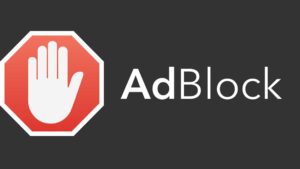Programmatic Display: A Worrying State of Affairs
Two recent articles by industry experts take a look at the state of the affairs in Programmatic Display.
What’s so special about programmatic display compared to ‘old-fashioned’ display ads – i.e. over-the-counter, negotiating directly with the advertiser? Targeting!
Programmatic advertising promises precise targeting based on data collected by intermediaries or data providers of programmatic platforms.
In theory, this is attractive because the more affinity your target campaigns have with your products, the better the results should be. In practice, it only works if the targeting data collection is reliable.
Unfortunately, all this data collection is based on either third-party cookies (on the way out) or device IDs (ditto).
The nebula of targeting intermediaries
A very detailed article by Augustine Fou gives an uncompromising overview of the nebula of intermediaries involved in programmatic. Here’s a quick summary.
The smallest website is linked to dozens, if not hundreds, of advertising platforms that track internet users (by depositing cookies). The objective is to establish a detailed profile of the user in order to provide better targeting via programmatic platforms.
These ad platforms are targeting intermediaries who are paid in the programmatic chain.
However, research analysis has shown that even the most basic targeting (gender: male or female) is only 42% reliable; less than random targeting (which is by definition 50% : male or female).
When you mix this with another parameter, for example gender + age group: the reliability falls to 12% of matching reliability -> which means you probably have the inaccurate targeting about 9 times out of 10.
These searches are done while 60% of third-party cookies surviving (thanks to Chrome), as well as a good part of Device IDs (thanks to Android – still Google 😉). You might as well say that the relevance of targeting will be close to 0 when these identifiers are no longer available.
Yet, these platforms pay themselves well in the programmatic value chain: that is, you as an advertiser, pay a percentage of your bids to buy targeting data from these intermediaries.
how much do advertisers pay?
A second article, written by media expert, Bob Hoffman, provides an eye opening and very funny report on what advertisers actually get out of their programmatic adspend.
Despite the provocative title, the article is very well documented and the calculations are based on publicly available resources to which everyone can make their own opinions.
For me, the conclusion is clear: only 3% of a programmatic ad budget is actually seen by humans like you and me.
The rest, 97% of the budget, pays various intermediaries (including the targeting intermediaries mentioned in the first article), absorbed by fraud/bots or non-visible ads.

I find the arguments of Hoffman and Fou quite convincing as they are supported by public sources and academic research. These two articles paint a rather bad impression about the programmatic advertising industry. Personally, I’ve always been circumspect about Display ads but these numbers even give me surprise.
Even if Bob Hoffmann is prabably a bit off on 3%, doubling or even tripling the figure doesn’t make it any better. For example, investing 1€ and ending up with less than 10c of ads shown?
If we give credit to those articles, the only way to ensure a rational use of a display budget would be to return to direct negotiations, by mutual agreement, with serious publishers that have great affinities with your target. Getting back to good old contextual targeting!
Worth thinking about. Let me know what you think?
Stéphane Gendrel, Founder of Adloop










